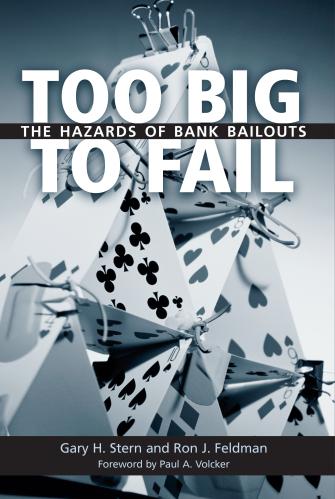Studies in this week’s Hutchins Roundup find that the consequences of quantitative tightening are unlikely to mirror those of quantitative easing, cheap credit for distressed firms has disinflationary effects, and more.
Want to receive the Hutchins Roundup as an email? Sign up here to get it in your inbox every Thursday.
Unwinding the Federal Reserve’s balance sheet results in tighter financial conditions
Will quantitative tightening—the unwinding of the Federal Reserve’s bond-buying program—simply have the reverse effects on financial conditions as quantitative easing (QE)? Using data from 2017 to 2019, a period in which the Fed reduced its assets from $2.0 trillion to $1.4 trillion, A. Lee Smith of the Federal Reserve Bank of Kansas City and Victor J. Valcarcel of the University of Texas at Dallas find that the answer is no. While bond sales did cause financial conditions to tighten, the channels were different from those of bond purchases. In particular, the authors find that the liquidity effects of balance sheet normalization were much larger than those of balance sheet expansion, causing financial conditions to tighten despite the fact normalization did not have any of the announcement effects associated with QE. Although these specific findings may not be generalizable to other central banks, the authors conclude, the consequences of unwinding past balance sheet expansions by any bank will be vastly different from those related to asset purchases and thus require additional studies and research.
Cheap credit for distressed firms creates excess supply, lowering prices
Despite lower interest rates and monetary easing by European central banks, inflation has remained persistently lower than forecast. V. Acharya of the New York Fed and co-authors suggest an explanation: in a cheap credit environment, firms with otherwise unsustainable business models (“zombie firms”) remain afloat. This prevents firm supply from decreasing in response to lower demand, creating excess production that keeps prices low. Using data on 1.1 million European firms across 65 industries, the authors find that markets with a greater increase in the share of zombie firms have lower CPI growth. Had there not been a rise in so-called “zombie credit” after 2012, inflation in Europe would have been 0.4 percentage point higher. A higher share of zombie firms is also associated with higher input costs and misallocation of capital and labor towards distressed firms, lowering productivity and value added by firms, the authors say.
Shifts of jobs and sales across firms due to COVID are projected to continue through 2021
The increased reallocation of jobs and sales across firms—reflecting the pandemic’s uneven economic shock—is likely to persist over the next year, say Jose Maria Barrero of the Mexico Autonomous Institute of Technology and co-authors. Using firm-level data and forecasts from the Survey of Business Uncertainty, a monthly survey of 450 business executives, the authors find that the pace of reallocation of firms’ sales and job growth has risen sharply since the onset of the pandemic. They also find that firms most negatively affected by the pandemic expect to continue shrinking in 2021, while firms that grew in 2020 project further growth. Industries that were able to transition to work from home have seen a strong increase in current and projected employment growth relative to those that couldn’t, a trend that was nonexistent in years prior to the pandemic, the authors say.
Chart of the week: US population growth from 2019 to 2020 is lowest since at least 1900
Quote of the week:
“The Main Street program proved to be a challenging undertaking for all involved, and unfortunately did not meet the needs of everyone who expressed interest; however, my personal preference would have been to continue the program through the first half of 2021. The program filled a hole often left unaddressed – support for medium-sized businesses. In my view, there are significant implications for productivity and industrial organization if only small and large companies can receive fiscal and lending support during crises,” says Eric S. Rosengren, President of the Federal Reserve Bank of Boston.
“At the same time, while the Main Street lending program provided very helpful financing, I believe that were certain tweaks permitted, it could have been more impactful… First, with less focus on mitigation of potential loss to the Treasury, much more credit would have been made available. Second, designing the program to have less legal and operational complexity, and structuring the banks’ role differently – for example, as an opportunity to earn fees as long as the loan performed, rather than a 5% participation – may have increased the attractiveness of the program for banks. Finally, longer terms and greater ability to refinance would have provided support to medium-sized businesses more akin to what was available to larger companies.”
The Brookings Institution is committed to quality, independence, and impact.
We are supported by a diverse array of funders. In line with our values and policies, each Brookings publication represents the sole views of its author(s).













Commentary
Hutchins Roundup: quantitative tightening, zombie credit, and more
January 14, 2021